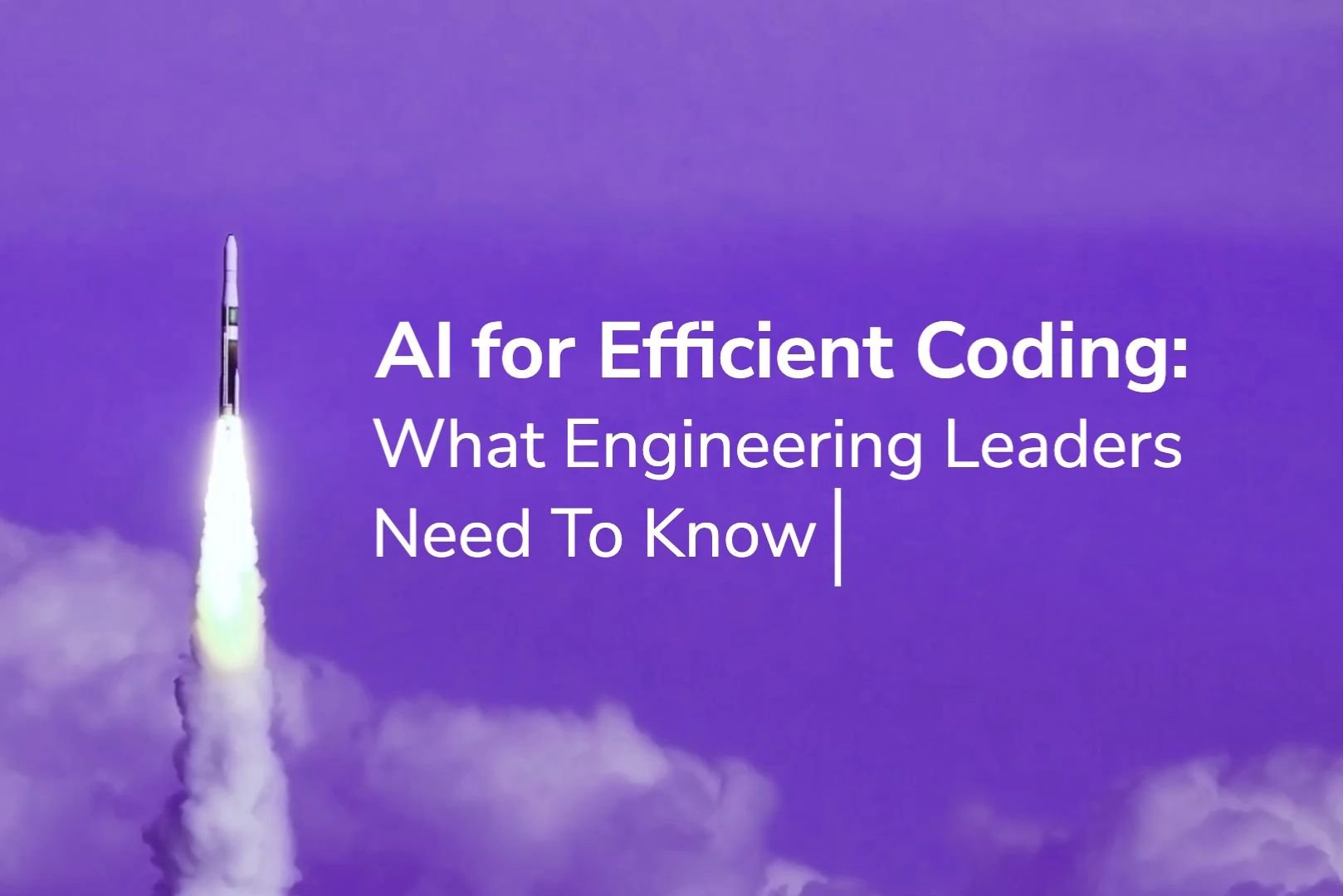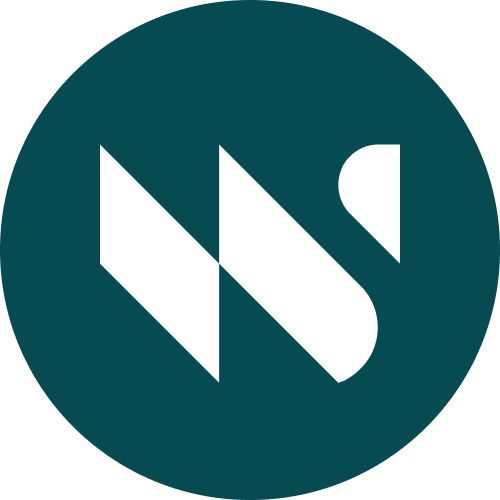AI for Efficient Coding: What Engineering Leaders Need To Know
Considering adding AI-powered tools to your team's software development workflows? Get Whitespectre’s firsthand insights from experiments integrating AI tools to boost coding efficiency and effectiveness.

This article was collaboratively authored by Whitespectre Engineering team members Diogo Rosa and Jefferson Tavares de Pádua, and Senior Content Lead YeeLin Thum.
Software development is undergoing an AI-powered transformation, with new tools offering the promise of greater efficiency, faster software releases, and even an enhanced developer experience.
Yet, only about 44% of developers currently use AI tools in their development process. This underscores a broader reality; despite the well-deserved buzz, most teams remain on the sidelines while CTOs and tech leaders determine their next move.
The real question for tech leaders isn’t just about AI’s future potential, but how can AI truly boost an engineering team’s efficiency and effectiveness now? And accordingly, how can teams maximize the benefits from these tools while minimizing risk and unintended consequences?
Read on as the Whitespectre Engineering team shares their hands-on experience working and experimenting with AI tools.
In this article, we will provide valuable insights for engineering teams seeking to integrate AI into their workflows and stay ahead of the curve.
Embracing AI as an Engineering team
Software development demands agility, workflow efficiency, and the ability to adapt. AI has risen to the challenge - helping developers save time on routine tasks, speed up problem-solving, optimize resource allocation, and leverage predictive insights for technical challenges.
But the reality of using AI in software development is nuanced:
- How do you balance speed without compromising code quality?
- How much fine-tuning does AI-generated code require?
- And how do you address concerns over skill gaps, resistance to AI adoption, data privacy, and whether code loses its unique touch over time?
For CTOs and tech leads, this translates into several key considerations:
1. Choosing the right AI tool
- What are the best AI-powered tools to power up your daily tasks?
- What's the best use of AI to automate some of your daily workflows?
- Beyond their advertised capabilities, how reliable are the outputs they generate?
2. AI workflow integration complexity
- Does AI tool integration make sense for you and your teams now?
- And if so, how complex is the integration process?
3. Skills and cultural shifts
- How much resources are required to train the team to use AI tools effectively?
- Crucially, how can you foster a culture where AI is viewed as a collaborative asset rather than a replacement for the team?
4. Value assessment
- What’s the impact of integrating AI into your workflows or existing ecosystem?
- How do you quantify improvements in efficiency, productivity, and code quality?
- What are the associated costs, and do they warrant premium subscriptions for the entire team?
Striking the right balance among these factors is key to successfully integrating AI into your software development process.
Using AI to deliver code more efficiently and effectively
While AI promises faster and more efficient coding, we were cautious in our initial approach. Direct testing and discussions punctuated our exploration of AI tools and models for software development, such as ChatGPT, Copilot, Bard, Cursor, and Anthropic’s Claude V2.
We’ve also had our eyes on other powerful AI tools like CodeRabbit, Code Llama, and AWS CodeWhisperer. However, we remain selective to ensure each tool aligns with our specific challenges and philosophy of building secure, scalable, and robust software solutions.
We’ve even brought this AI-enabled innovation in-house through Whitespectre Labs, our internal product incubator. Our team is building an LLM-powered tool - with the help of Anthropic’s Claude V2 - designed to integrate with JIRA through our internal task automation bot, empowering project teams to optimize their workflow, deliver exceptional results, and achieve project success.
Finally, beyond productivity gains, we always prioritize data security and regulatory compliance. These are crucial given our role in HIPAA, GDPR, and banking-related client projects. With the number of emerging AI tools in the market, we choose tools from established sources like OpenAI and GitHub, which we then properly configure for optimal security. For instance, we adopted Cursor not only because it combines the features of ChatGPT and Copilot but also because of its local mode privacy feature.
Our experiments and deployment of AI tools in our coding and QA workflows have led us to 3 key insights:
1. Incremental efficiencies lead to cumulative gains
Leveraging AI tools in our workflows, we conservatively estimate an approximate 20% boost in daily operational efficiency around initial research, boilerplate code, simple code snippets or data pulls.
Tools like ChatGPT and Copilot are freeing up hours each month. This saved time enables our developers to focus on creative coding work and innovation.
A word of caution: These efficiencies can sometimes be offset by the time spent tweaking AI-generated code to ensure it meets our team’s specific code standards and requirements.
2. To unlock maximum value, choosing the right AI tool is essential
The efficacy of an AI tool hinges on its alignment with specific tasks. So here, it’s important to understand the strengths and limitations of the tools you’re testing.
For instance, while ChatGPT and GitHub Copilot offer significant value as coding assistants, ChatGPT excels in generating command lines. At the same time, due to its vast repository from GitHub, Copilot often surpasses ChatGPT in tasks like code completion.
Another example is that our QA team found more value in Bard over ChatGPT for creating test suites, given ChatGPT’s unfamiliarity with newer libraries like Maestro.
3. AI is a partner, not a replacement
AI tools save us time on repetitive coding tasks and accelerate processes. But they don’t diminish the developer’s role. Instead, they empower developers to do their best work.
In addition, although they are “smart” tools, they lack the human touch needed to grasp context, subtle nuances, and the innate ability to piece things together.
So, while AI tools can help your team tackle the grunt work, human engineers must remain at the helm of code design, strategy, decision-making, and direction.
Jefferson Tavares de Pádua notes in his article on testing ChatGPT for business logic validation, that AI’s output sometimes looks deceptively precise. Yet, distinguishing right from wrong can be challenging for the tool without a reference point.
“You see, it really looks like ChatGPT understood the context I gave it, and it also explained how it came up with this solution in a really confident and eloquent way. So unless I already knew what the correct answer was, there's no way for me to tell that this one is wrong since the AI doesn't indicate its "confidence level" to me.”
Keep in mind that AI evaluation goes beyond mere feature comparisons. Your selection not only impacts immediate developer efficiency and the longer-term resilience and security of your software products. Tools like ChatGPT and Copilot make coding faster but work best when matched to the right tasks.
Ultimately, combining AI tools with human insight gives the best results.
AI’s role for efficient and timely software delivery: Theory vs. reality
Based on our experience, the capabilities of AI for software development, though promising, can sometimes be overstated. It’s vital to approach AI's role in efficient software delivery with a balanced perspective.
Here are 3 areas to proceed with caution:
1. Product complexity
AI tools are particularly effective for proof of concepts (POCs) or software solutions with simpler business rules. However, these tools may not be as useful for products with intricate layers of business rules, such as an eCommerce returns app where deeper human interaction is required.
2. Existing code dynamics
AI tools are useful when kickstarting coding projects from scratch. However, using them mid-project can be challenging, especially when there’s an existing codebase and pre-existing guidelines that need to be considered.
This requires writing effective prompts and clearly understanding the desired outcome beforehand, which can be time-consuming and possibly take more time to get to the desired outcome.
3. Measuring team efficiency
AI’s impact on software development efficiency isn’t linear or easy to measure. This is a tricky one and something that we are still exploring ourselves.
Measuring the increased efficiency of an engineering team when using AI tools is challenging due to varying contexts, difficulty in quantifying qualitative factors, and the complexity of establishing consistent measurement standards. The impact of AI on team performance may be more apparent during code development but can be less tangible in other phases of the software development lifecycle.
An approach to consider is measuring performance through output-focused metrics such as project progression based on the team's velocity, where progression tracking is based on burndowns from 2-week sprints. Include feature and version burnups for more comprehensive performance tracking.
The bottom line: Evaluate, experiment, and iterate with AI tools for coding to maximize value and efficiency
One thing is clear: AI is here to stay, and it's rapidly reshaping the way we build, test, and deliver great software.
With its integration, developers are better positioned to achieve a productive flow state. This fosters efficient communication and collaboration and opens doors to upskilling and enhancing individual competencies.
Reflecting on our experience and the broader industry trends, here are 3 key takeaways for organizations looking to integrate AI tools into their development workflows:
- Choose the right AI tool for the job - AI tools are not one size fits all. A strategic approach is required to align the AI tool with specific needs and project types. Evaluate internal tasks/workflows that can be automated with the help of AI, then select an appropriate AI tool that fits the bill.
- Nurture an AI-positive culture - For successful integration, foster a mindset where AI tools empower your team, not replace them. Encourage hands-on experimentation to help your team overcome any reservations they may have.
- Instil iterative learning - AI integration is not a one-off event. Continuous learning, feedback, and adaptation are crucial to maximize its benefits.
Blending developer expertise with the speed of AI does more than just optimize code and enhance efficiency. It places your organization at the forefront of innovation, ensuring you remain competitive in a fast-evolving software landscape.
As we continue our exploration with AI, we remain committed to delivering robust, secure, and scalable solutions for our client partners. If you’re looking for a partner to help you strategically navigate the AI landscape tailored to your organization’s specific goals, get in touch.
